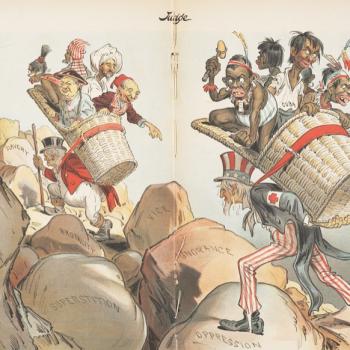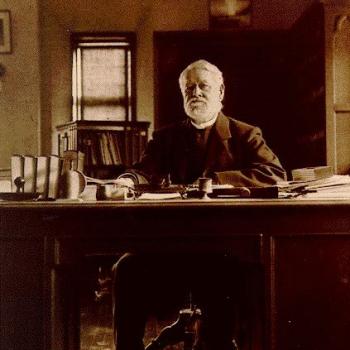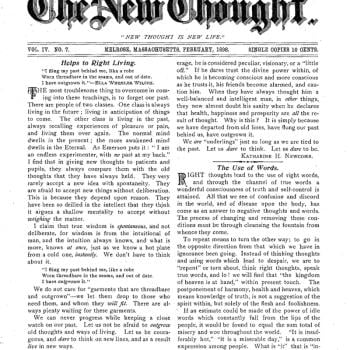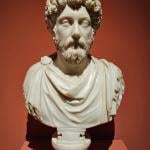Last time, I described the enormous attraction of the Theosophical movement in the early twentieth century, when it played such a central role in Western culture. But what were the core themes that so appealed to highly educated thinkers and the avant-garde – in short, to Modernism and modernity? What made the Theosophical package so much more attractive than traditional Western religions – or in many cases, than secular radicalism and progressivism?
What follows, in no particular order, is my own compilation of Theosophical themes and messages. And as you go along, you might be struck by how much this sounds like the common themes of the original Gnostic movement many centuries ago. So what did those Theosophists teach?
i.All familiar religions and philosophies contain truths, but these are only pale shadows of a glorious higher Truth that is accessible to those who seek it. To quote the summary by L. Frank Baum, in 1890 (he of the Wizard of Oz). “Theosophy is not a religion. Its followers are simply ‘searchers after Truth.’ Not for the ignorant are the tenets they hold, neither for the worldly in any sense. Enrolled within their ranks are some of the grandest intellects of the Eastern and Western worlds.”
ii.Crucially, mystical wisdom is not distinct from Science, and it follows similar principles, with evolution as a core reality. Blavatsky’s 1877 book Isis Unveiled bore the subtitle A Master-Key to the Mysteries of Ancient and Modern Science and Theology. Her 1888 book The Secret Doctrine was subtitled The Synthesis of Science, Religion and Philosophy. Worldly science may not recognize that common identity as yet, but that just reflects its ignorance and prejudice. A major theme of the first volume of Isis Unveiled was to mock “The ‘Infallibility’ of Modern Science.” In the early twentieth century, esoteric thinkers claimed that insights like those of Einstein and Heisenberg provided glimpses into these higher realities. To borrow the phrase of Arthur C. Clarke, any sufficiently advanced technology is indistinguishable from magic.
iii.Any authentic study of Truth must pay due attention to all human cultures, and Buddhism or Hinduism might well include truths much higher than those of the West, notably in its concept of reincarnation. The cultures of India and Tibet were uniquely powerful and authentic bearers of ancient tradition. Western knowledge can claim no privilege, neither Christianity nor materialist science. Nor can the White race – a startling and subversive proposition in 1910 or so.
iv.Each of those very diverse cultures offers its lessons about exactly how to ascend to higher realities and states.
v.When viewed properly, the world’s various cultures have often influenced each other and presented similar truths, despite attempts at suppression by orthodox authorities. Thus Gnosticism and alternative early Christianities contain many of the same truths as Buddhism or Hinduism.
vi.Blavatsky’s example aroused expectations that great truths might still be found in long-lost scriptures that awaited discovery. Newly discovered “gospels” proliferated in the early twentieth century, and some depicted Jesus gaining the authentic wisdom of South and East Asia. The Aquarian Gospel of Jesus the Christ (1908) was one classic example, supposedly derived from the Akashic record.
vii.Acquiring spiritual truth is no mere intellectual matter, but has material consequences in the form of supernatural powers. Theosophy taught how to discover and access the various higher states that made up each individual, each with its different realities and capacities, and operating on different planes. As well as the familiar physical body, those other states included the astral body. The adept or initiate could use the many dimensions of the universe to perform works that seemed almost godlike, but which were rooted in alternative science. These included prophecy and precognition, telekinesis and telepathy, mediumship and astral travel. Rudyard Kipling described his encounter with “the hard-headed Scotch merchant with a taste for spiritualism, who begged me to tell him whether there was really anything in Theosophy, and whether Tibet was full of levitating chelas [disciples], as he believed.”
viii.Without acknowledging and accessing those powers, humanity remained in an inferior state of deliberate denial and rejection, almost a slumber. Informed individuals were called to awaken to full humanity.
ix.Human history is vastly older than archaeologists might suggest. There have been countless races, many forms of consciousness, and many lost civilizations. Some (Atlantis, Mu, Lemuria, Hyperborea) have left their traces around the world. Our souls have lived in many of those past worlds, and those realities can be recovered and explored.
x.Humanity contains people and races with varying degrees of spirituality, and through study, meditation, and mystical exercise, individuals can rise in the hierarchy and achieve special insight.
xi.Because it is so extremely potent and even potentially dangerous, Truth cannot be explicitly declared to the masses, except in coded and symbolic form. Wisdom is gained through the work of small groups, who progress through stages of enlightenment and initiation. These followed the model of the ancient Mystery schools.
xii.Walking among us presently, unseen and unrecognized, are some figures of special spiritual power – Masters or gurus.
xiii.There are critical moments and transitions in the progress of humanity, and we might be approaching one such transformation of consciousness. At least as viewed in the early twentieth century, Theosophy and cognate movements had a strongly messianic and millenarian character. As I wrote in my Great and Holy War, “Another of Russia’s avant-garde heroes of the day was the composer Alexander Scriabin, an enthusiastic devotee of Theosophy …. In the years before the war, Scriabin devoted his attention to composing his Mysterium, a titanic multimedia and multisensory event to be held in the foothills of the Himalayas, with the aim of unleashing Armageddon and initiating a new era in world history.”
xiv.Theosophy appealed because (at least in most versions) its political and cultural messages were strongly progressive. It was feminist, non-racial, and anti-imperial. Given the attitudes of the time, we can find some remarks about “lower races” that contradict this rule (usually concerning Africans), but generally the statement about progressivism stands. And as I have said, it claimed to be rooted absolutely in science.
xv.There is an ongoing scholarly project called Enchanted Modernities, and that phrase demands attention. Theosophy presented itself as ultra-modern and scientific, and yet its content was effectively ancient and magical, mystical and (sorry) superstitious. Yes, you really could have both worlds, ancient and modern! That Enchanted Modernities project covers the intimate relationship between Theosophy, Modernism and the Arts, 1875-1960.
xvi.Cultural and aesthetic activities are spiritual manifestations, quite as much as explicitly religious or mystical enterprises. The Theosophical mythology, its world-view, presented an amazing range of opportunities and themes for creative artists and writers.
xvii.Artists were fascinated by the Theosophical idea that authentic Truth and Wisdom existed in higher realms that could only be accessed by non-material spiritual powers of the mind and soul, by forms of mystical intuition or visionary experience. Or to use an anachronism, by some kind of “channeling.” I quote from a useful website on “Art and Theosophy” that notes the work of crucial innovators like Kandinsky, Mondrian, and Malevich: “This was the key to abstraction, which began to emerge around 1910. And it was also the key to Theosophy. Both busied themselves with investigating the process of cosmic and human evolution, with finding the ‘essence of things’. Both looked for a universal grammar that could communicate this essence. Both were instinctively drawn into the ancient philosophical and religious controversy concerning the relationship of appearance and reality. And both were essentially anti-intellectual movements: they shared the belief that one could understand emotionally the secrets of creation in a way that transcended scientific observation or sheer logic.”
Incidentally, Alex Ross has a fine essay in a recent New Yorker on The Occult Roots of Modernism, which has a lot to say about these early twentieth century subcultures.
Taken together, this was an enormously attractive package of ideas and beliefs.













